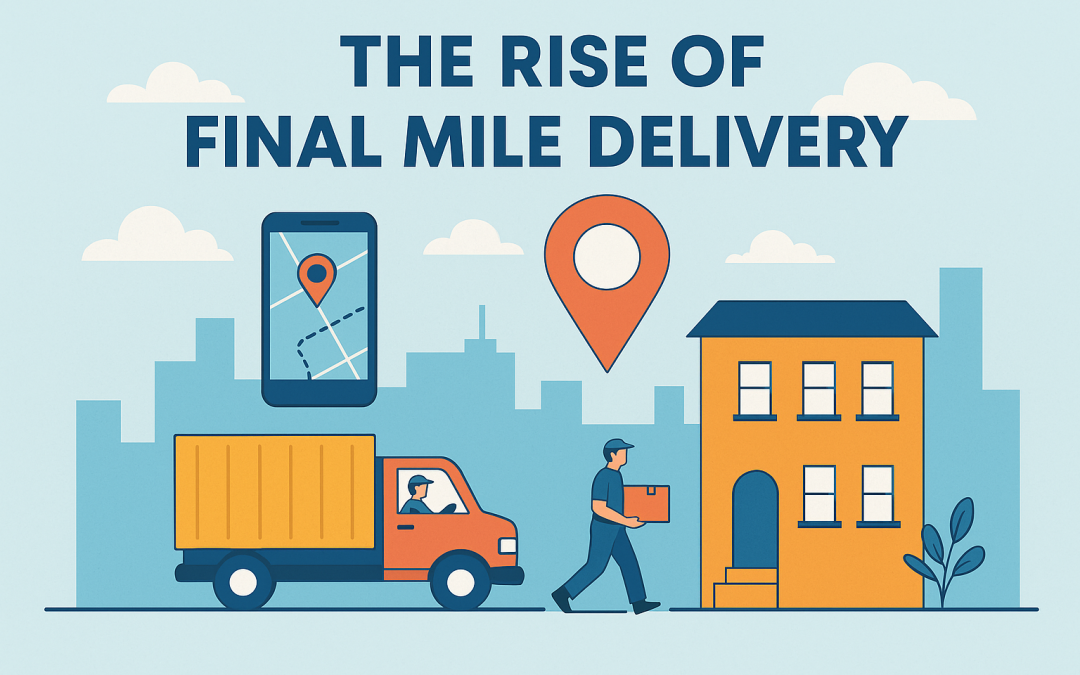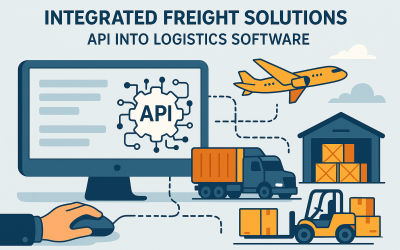Final mile delivery, also called last mile delivery, is the final (and last) step in the delivery process where a product is moved from a distribution hub to the end customer. It is a crucial logistics stage—after all, it doesn’t matter how efficiently the product moves through the logistics chains if final mile delays cause customer frustration and dissatisfaction or, even worse, result in the delivery of damaged goods. Not only is final mile delivery arguably the most crucial part of the supply chain, but it is also the most expensive and complex.
The rise of final-mile delivery in the age of online shopping generates new challenges and opportunities. Consumers are accustomed to the convenience of ordering with a simple mouse click. That immediate gratification is ruined if the product does not arrive on time, arrives broken, or doesn’t arrive at all. Consequently, the efficiency and effectiveness of final-mile delivery are a deciding factor in customer satisfaction and retention, as well as business reputation.
Let’s take a closer look at the challenges and opportunities in final-mile delivery.
5 Problems of Final Mile Delivery
The problems and challenges of final-mile delivery encompass the following:
1. High Cost
Final mile delivery can account for up to 53% of total shipping costs. Per-unit delivery is higher compared to bulk shipments to stores because it generally deals with small packages going to multiple locations. This increases costs for labor, fuel, and vehicle maintenance; it also increases likely inefficiencies due to poor routing and/or driver behaviors.
An additional problem is failed deliveries due to incorrect addresses, package theft, or when customers are not available for required signatures. Reattempting failed deliveries is a significant hidden cost contributing to the overall high cost of final-mile delivery.
2. Complex Logistics
Multiple delivery points during final mile delivery further complicate logistics, as well as the higher expense noted above. There are also unique logistical challenges depending on whether final-mile delivery is conducted in urban or rural areas. Urban areas typically present more traffic congestion, parking restrictions, and limited access to certain locations. Rural areas require travelling longer distances with fewer deliveries per route, reducing efficiency.
3. Customer Expectations
Customers expect packages to arrive when they are supposed to arrive, especially if they are paying for same-day or next-day delivery services, which further adds to logistics complexity. In addition, real-time tracking technology has raised customer expectations in knowing just how long and when final-mile deliveries take place.
4. Technology
Providing real-time tracking and customer communication requires final mile delivery to adopt advanced, sometimes expensive, technology solutions. Properly implemented, however, technology can improve final-mile delivery efficiency and reduce costs.
5. Environmental Impact
Final mile delivery means more delivery vehicles on the road. More vehicles mean more carbon emissions and more traffic congestion, which further exacerbates carbon emissions. According to one report, if no interventions are instituted, carbon emissions are expected to jump 32% by 2030 from urban final-mile delivery traffic. Consumers want efficiency and convenience, but many also want sustainability.
3 Solutions to Final Mile Delivery
The opportunities and solutions for final mile delivery can help improve efficiency, reduce costs, and increase customer satisfaction. These include:
1. Growth of Ecommerce
The ecommerce boom, especially post-pandemic, creates enormous demand for final-mile delivery. American ecommerce is expected to hit $1.2 trillion in sales in 2025, and continues to trend upward. Final mile delivery is all the more important for ecommerce businesses to ensure customer satisfaction and brand loyalty.
This is especially true during high sales periods of Cyber Monday, Black Friday, and other holiday promotional periods. According to one survey, 77% of final-mile delivery businesses expect ecommerce to have the greatest impact on their operations for the next five years.
2. Technological Adoption
Technology has significantly enhanced green practices in final mile management by reducing waste and lowering carbon emissions. Real-time final mile tracking and mobile apps enhance transparency and customer satisfaction. AI-powered route optimization, drones, autonomous vehicles, and smart lockers are improving delivery times while reducing both costs and carbon footprint. Data-driven decision making offers unbiased analytics to better optimize delivery schedules and improve efficiencies.
Also, the use of smart devices to obtain customer signatures and instructions, as well as to verify deliveries, helps provide better transparency into delivery performance and overall customer experience.
3. Sustainability Initiatives
With more vehicles on the road to execute final mile delivery that can successfully combine efficiency with sustainability can achieve a competitive advantage and gain brand loyalty. Electric and hybrid vehicles can help reduce the carbon footprint. However, even without investing in new vehicles, effective use of GPS technologies and route optimization software not only reduces emissions but also reduces fuel costs.
FMI’s Final Mile Delivery Is THE Final Choice!
FMI meets and exceeds the various challenges and opportunities of final mile delivery. Our company’s web-based dashboard provides complete shipment visibility and reporting that improves final mile delivery efficiencies with reduced expense.
We offer retailers and ecommerce businesses significant advantages for final-mile delivery with expanded resources, detailed reporting, shipment transparency, web-based portals and order entry, and exceptional customer service. When it comes to final mile delivery, the final choice is FMI.


Integrated Freight Solutions: The Role of API in Logistics Software
Integrated freight solutions save you both time and money when you get all your logistics software to talk to each other, and APIs are the key! APIs (Application Programming Interfaces) and logistics software improve freight logistics by enhancing efficiency,...
Sustainability in Freight: How Technology Drives Green Initiatives
Meet Sustainability Goals and Improve Operational Efficiency Technology has significantly enhanced green practices in freight management by reducing waste and lowering carbon emissions. What’s more, resulting improved efficiencies reduce operating costs and boost...
Innovations in TMS Technology: The Future of Freight Management
The future of freight management is tied to innovations in Transportation Management Systems (TMS) technology that helps businesses plan, execute, and optimize operations. The freight industry is undergoing a technological transformation, that requires digital tools...




